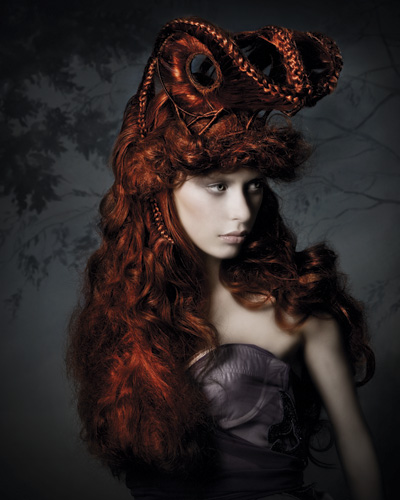The key thing in 18th-century France was to get the hair extremely high. Perching on a small ladder behind his client, a Parisian hairdresser could pull off all sorts of engineering feats. Once the hair was three foot in the air, the coiffeur could add props — ribbons, shepherdesses, feathers, mythical allegories. After a French naval victory in 1778, some of the more patriotic women took to sporting a ship riding on the waves of their hair. Extravagance was frowned upon after the Revolution, but innovation continued; some ladies of fashion took to wearing their hair very short like the hair of those condemned to the guillotine. The style was called ‘à la victime’.
This compendium of hairstyles shows that, apart from this anomaly, the hair world has always had a soft spot for high maintenance styles. The coiffure 1830, for example, was one of a number of creations that built loops of false hair into ambitious structures on top of the head. You get the impression that the wearer would have to have stayed very still to have kept the various elements in place.
As wigs and false hair waned in popularity, fashions for wavy, dyed, shingled and bobbed styles kept hairdressers in regular business. This book brings you through the 20th century with a nice mixture of film stars and fashion icons, diagrams from styling books and advertisements with taglines such as ‘Hair colour so natural only her hairdresser knows for sure!’
After centuries of close attention to hair, it’s hard for hairdressers today to come up with new styles, but they do manage it. There’s hair made to look like lace, hair like a Mayan pyramid, hair like a straw hat, as well as an impressive collection of two-toned styles. Inventiveness in hair is still in a healthy state, although the final picture in the book raises concerns that things are getting a bit out of control: a model holds a mane of detached hair above her head.
Still, if they get really stuck, hairdressers can always take inspiration from the early part of the book and bring back the cone-head look of the 15th-century hennin or the respectable, horned coiffure cornue.






Comments